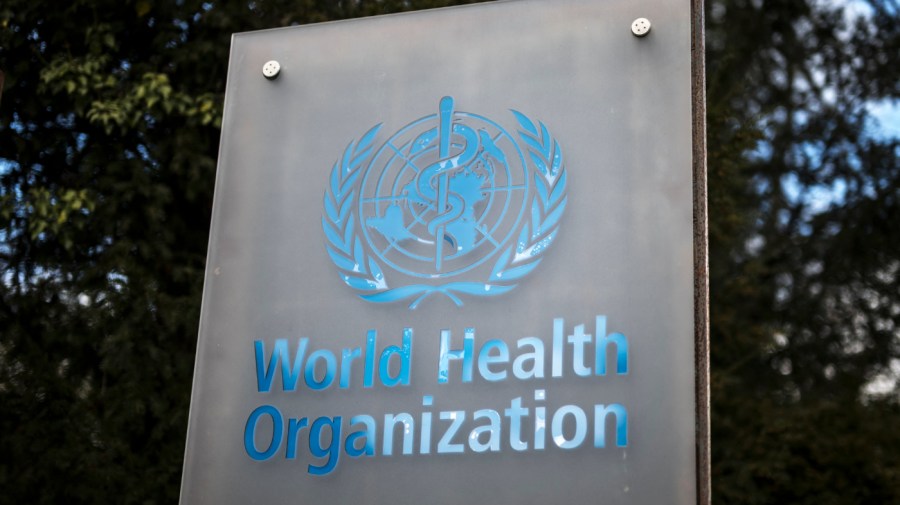
News from the World Health Organization’s February board meeting, just released, indicates that the U.N. affiliate is facing a budget crisis. It is $1.9 billion short of its anticipated budget of $4.2 billion, not to mention a carried-over deficit of $600 million.
This situation has nothing to do with President Trump’s recent decision to quit the WHO — again. He first withdrew the U.S. in July 2020. Upon coming into office, former President Joe Biden immediately rejoined.
Yet, last year, Biden failed to pay America’s annual dues of $130 million. Besides this contractual obligation, the U.S. routinely volunteers an additional $1 billion every year. The Biden team forgot to send along this gift as well.
While America’s missing support seems an important part of the WHO’s budgetary shortfall, in reality the organization has been running with little regard to budgetary discipline. In this regard, WHO echoes the disconnect between funding and performance that has characterized the U.S.’s Centers for Disease Control, the WHO’s corresponding American partner, for many years.
For example, consider that the CDC has seen its annual budget double to more than $11 billion since the outbreak of COVID in 2020. Yet, writing in Foreign Affairs last July, Caitlin Rivers, a former CDC epidemiologist responsible for forecasting, argued that America is still not ready for the next outbreak.
The real Achilles Heal of America’s public health readiness is the paucity of CDC data. During the COVID epidemic, the CDC was never able to provide real-time estimates of infections, hospitalizations or death rates, nor could it identify localized hotspots or predict where the virus was going. Likewise, the WHO was incapable of producing the most basic of information on the worldwide status of the COVID pandemic.
What is more, the WHO is anything but a benign organization. Its leadership knowingly provided cover for China as it misled the world regarding the origins of COVID.
To preserve faith in the institution, its leaders should have insisted that China provide data and information on the nature of the mutating virus. That would have made containment quicker and armed health agencies worldwide with the tools needed to combat it.
Instead, WHO was China’s accomplice in this deception, which contributed to the deaths of many thousands of Americans and many more worldwide. This was foundational to Trump’s decision to withdraw from the WHO a second time.
WHO membership is not an obligation. It should be judged in terms of costs and benefits. With Trump’s decision, it is time for the U.S. to consider an alternative to the WHO — a more nimble, innovative institution that would harness technology to pinpoint outbreaks and spot trends around the world.
With the U.S.’s global lead in AI, a private sector solution would allow for “crowd-sourced” data that could be synthesized and disseminated to health researchers and providers in real-time. Kicking such a global resource off might be the work of a far-sighted private foundation.
The new organization’s mission would be to ensure transparency in global health data. Carefully gathered and curated data by a cadre of participating volunteers could become the gold standard of information.
Privately funded, nefarious actors such as China would never work to bias the organization’s data. And due to its open-source nature, citizen scientists would have the opportunity to continuously check the data and report their findings.
This global utility might become the first such shared self-managed resource of the post-governmental age. Properly managed, it would outperform governmental agencies once thought to be the only legitimate source of actionable information.
Carl Schramm is a university professor at Syracuse and a fellow at the Johns Hopkins Institute for Applied Economics, Global Health and the Study of Business Enterprise.

